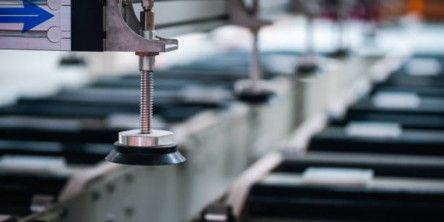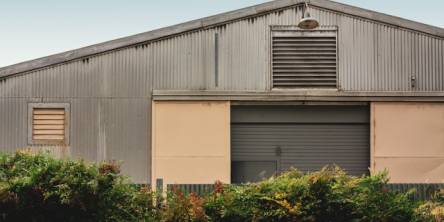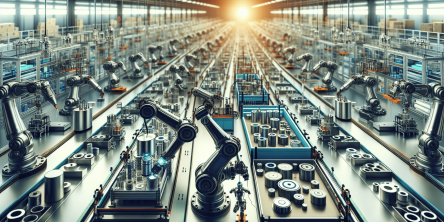Effects of Furnace Slip on the Wafer Strength
The silicon wafers are strong at room temperature, but they become weaker as the temperature is increased. The furnace manufacturing steps are essential for the processing of IC’s (integrated circuits). During this process, a non-uniform high temperature produces a non-uniform expansion within the wafer. Therefore, a consequential thermal stress can cause restricted or extensive furnace slip.
It obstructs the formation of silicon crystalline structure and completely decomposes the electrical and physical features of the wafer. The dislocations that are formed by slip can cause gate oxide integrity collapse, severe junction leakage, and untimely breakdown. The physical deformation can cause wafer breakage, pattern misalignment, chucking problems, and focus instability.
A non-uniform temperature is produced in the silicon wafer during temperature furnace push. This causes a bright beaming energy from the kiln tube to heat up the wafer edge prior than the wafer center. This can also cause slip around the silicon wafer edge and the deformation of the silicon wafer. During temperature ramp-down and furnace pull, the wafer cools earlier at the edges than in the center. This causes temperature non-uniformity at the wafer center and causes the wafer to bend.
After years of experience in fabrication of ICs (on silicon wafers), engineers revealed that furnace slip has always created a problem. The engineers have always faced problems in increasing the speed of furnace, temperature ramps and push-pull to maximize the furnace output. However, at the same it is also necessary to restrain the speed of temperature ramps and push-pull to prevent wafer damage. Whenever a new IC technology produces extreme built-in device stress, the balance shifts. This is because furnace recipes which had earlier created slip-free silicon wafers became recipes that created massive furnace slip.
In the thermal cycling process, the stress which occurs on oxide is used on the trench of sidewalls. The thermal stress created due to temperature non-uniformities in the wafer generate slip dislocations and shift those dislocations into the leakage sensitive area of the device. Now days IC devices with STI structures can be fabricated easily by moderating both the furnace stress and the built-in IC device stress.
Temperature is the most important factor that controls the strength of the thermal oxide silicon wafers, and this must be kept in mind when setting temperature ramping and furnace pull/push conditions. The strength of the wafer decreases drastically when the temperature is increased from 700°C to 800°C. If wafers are pulled or pushed into a furnace with the tube set at 800°C, the slip creates problem and can damage it. Therefore, the strength of the wafer is inversely proportional to the increase in temperature. It is essential to use lower ramping rates for higher temperature ranges to prevent wafer slip during furnace temperature ramping.
Other factors that affect the strength of the silicon wafer:
- The higher the density of dislocations in a thermal oxide silicon wafer, the weaker the wafer. It takes a large stress to create a dislocation, but only a small stress can cause an existing dislocation to multiply or move.
- The higher the interstitial oxygen concentration, the stronger the wafer. Dissolved or interstitial oxygen atoms connect themselves with dislocations and stop them from multiplying.
- The higher the amount of precipitated oxygen, the weaker the wafer. Increasing oxygen precipitates use up the interstitial oxygen and blow out the new dislocations.
- The higher the concentration of dopant atoms, the stronger the silicon wafers. The damaged fields around atoms, which are larger or smaller than the silicon atoms, obstruct the motion of dislocations.
- Integrated circuit films can apply stress on the underlying silicon wafers and make slip more appropriate. Trench and other IC structures, as well as mechanical damage issues, can deteriorate the wafer by acting as stress concentrators.
Similar Articles
CNC Machining has emerged as a vital technique in the current production process, as it provides an efficient and accurate means of manufacturing items with complex geometries. This technology is applied across aerospace, automobile, and medical devices manufacturing fields, and various other industries.
Find out what to look for in a reliable CNC machining manufacturer, from quality assurance and advanced technology to customer service, for efficient project success.
Save on pipe relining costs with smart planning. Learn how to reduce expenses through targeted repairs, material choices, off-peak scheduling, and competitive bids.
When it comes to metalworking, the quality of your equipment can make a significant difference in the efficiency and accuracy of your projects. Among the essential tools in any metalworking shop is the sheet metal brake, which plays a crucial role in bending and shaping metal sheets
Discover the latest design trends and innovations in metal table legs, enhancing style and functionality for modern interiors.
In the dynamic nature of the industrial sector, high-efficiency gate valves play a crucial role in the flow control system. Leading valve suppliers and globe valve suppliers are always engaged in the development of this technology to enhance the efficiency of the equipment.
When it comes to constructing a metal building, whether it's for industrial, commercial, or residential use, choosing the right metal building company is crucial. Metal buildings offer durability, flexibility, and efficiency, but only if they are designed and constructed correctly.
Discover how ERP systems streamline procurement in manufacturing, enhancing efficiency, reducing costs, and improving supplier management.
In today's fast-paced manufacturing landscape, the use of high-quality bonding solutions, such as industrial adhesives, has become increasingly crucial to ensure product quality, efficiency and competitiveness.









